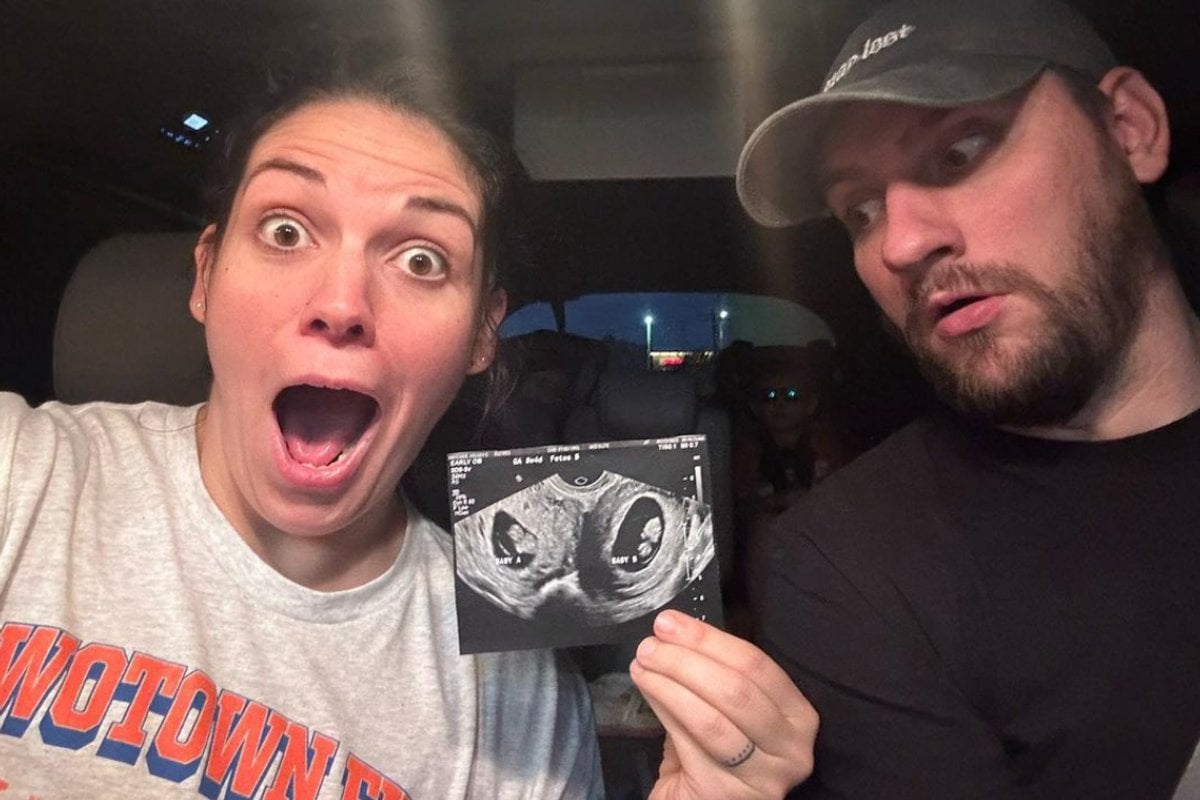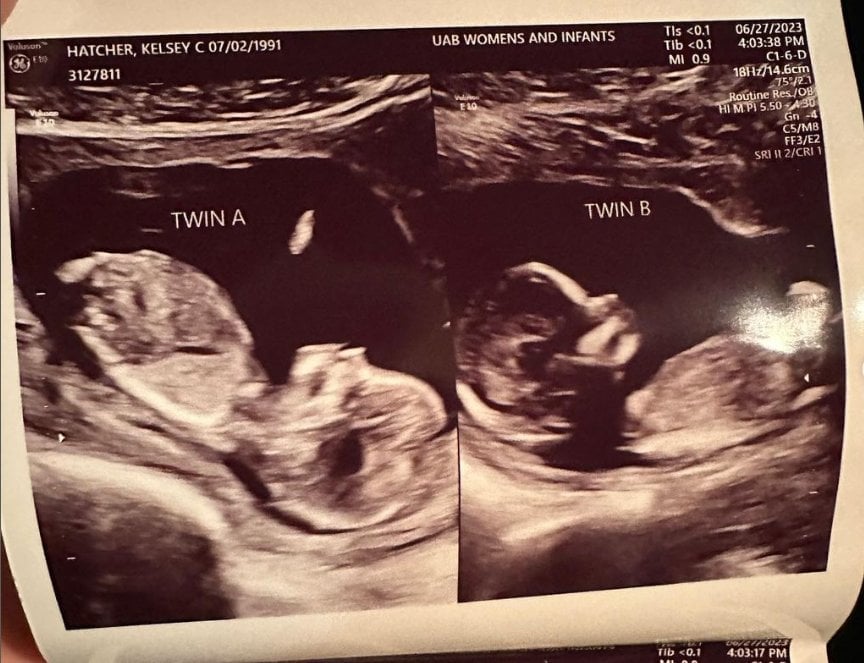
Kelsey Hatcher is pregnant. Twice. At the same time.
Confused? Let us explain.
Hatcher, from Alabama, was born with a condition known as Uterine Didelphis, which basically means she has two separate uteri, each with its own cervix. Around three in 1000 women are born with the condition, so it's pretty rare.
What's even more rare though, is becoming pregnant – in both uteri. The chances of that happening are around one in a million. But this is exactly what happened to Hatcher, who is now expecting two baby girls – one in each uterus, according to NBC News. To top it off, the babies' due date is Christmas Day.
Watch: Kelsey Hatcher details the moment she was told the news. Post continues below.
Hatcher told WVTM that her husband Caleb couldn't believe it when the first ultrasound revealed the condition.
"He said, 'You're lying.' I said, 'No, I’m not'," said Hatcher.
The couple already have three children, aged seven, four and two. There are no plans for any more.


